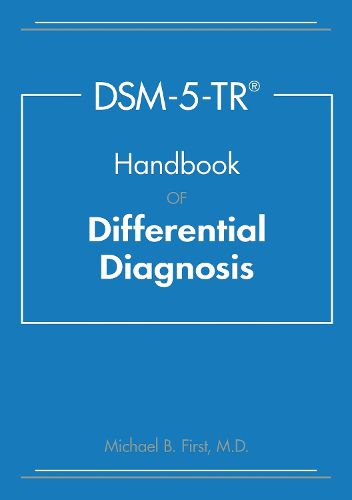Readings Newsletter
Become a Readings Member to make your shopping experience even easier.
Sign in or sign up for free!
You’re not far away from qualifying for FREE standard shipping within Australia
You’ve qualified for FREE standard shipping within Australia
The cart is loading…






The DSM-5-TR Handbook of Differential Diagnosis is the preeminent guide to differential diagnosis for both clinicians and students learning psychiatric diagnosis. Fully updated to reflect the recent Diagnostic and Statistical Manual of Mental Disorders, Fifth Edition, Text Revision (DSM-5-TR), this handbook includes two newly developed diagnostic trees (for dissociative symptoms and repetitive pathological behaviors). This indispensable guide offers a rich selection of diagnostic lenses through which to consider symptomatic presentations, grounded in the latest research and standards of practice.
Written by the DSM-5-TR Editor, an expert on psychiatric diagnosis and assessment, the handbook guides clinicians and students on how to differentiate between disorders with similar presentations in an accessible, easy-to-use format. An assortment of approaches to differential diagnosis and a number of features designed to benefit the evaluation include:
$9.00 standard shipping within Australia
FREE standard shipping within Australia for orders over $100.00
Express & International shipping calculated at checkout
The DSM-5-TR Handbook of Differential Diagnosis is the preeminent guide to differential diagnosis for both clinicians and students learning psychiatric diagnosis. Fully updated to reflect the recent Diagnostic and Statistical Manual of Mental Disorders, Fifth Edition, Text Revision (DSM-5-TR), this handbook includes two newly developed diagnostic trees (for dissociative symptoms and repetitive pathological behaviors). This indispensable guide offers a rich selection of diagnostic lenses through which to consider symptomatic presentations, grounded in the latest research and standards of practice.
Written by the DSM-5-TR Editor, an expert on psychiatric diagnosis and assessment, the handbook guides clinicians and students on how to differentiate between disorders with similar presentations in an accessible, easy-to-use format. An assortment of approaches to differential diagnosis and a number of features designed to benefit the evaluation include: